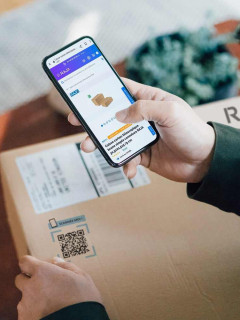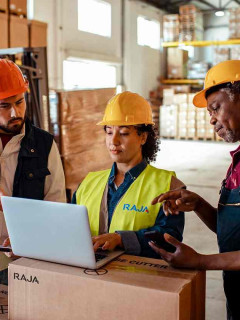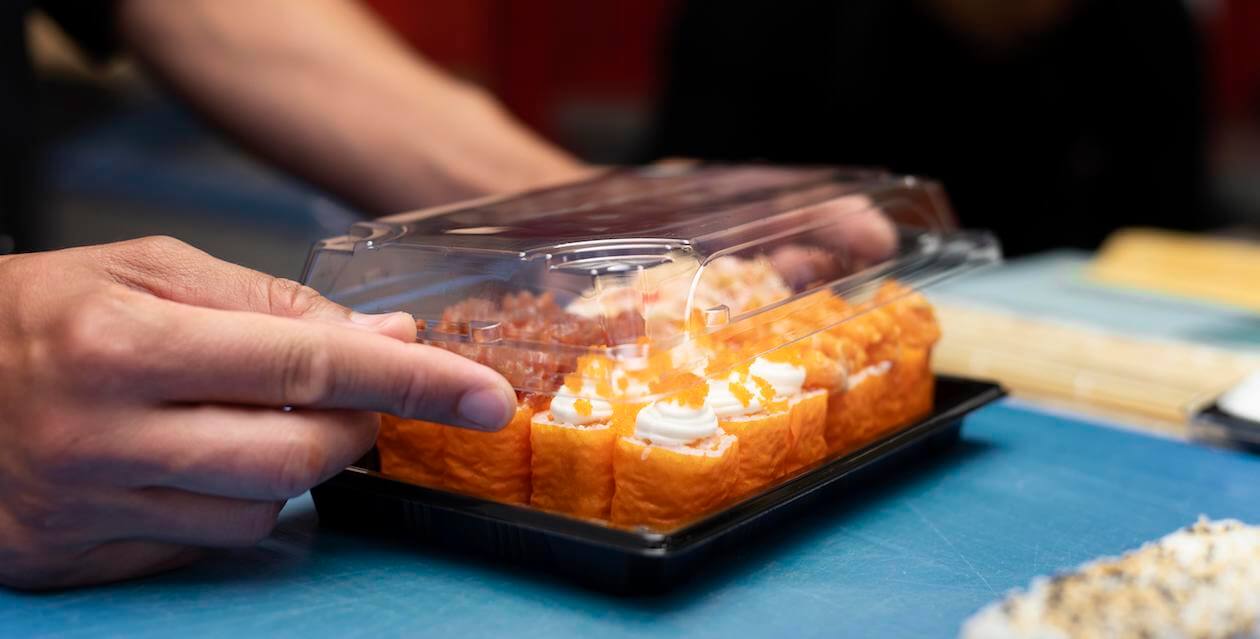 C’est un fait : la crise de la Covid-19 a eu un fort impact sur les établissements de restauration.
C’est un fait : la crise de la Covid-19 a eu un fort impact sur les établissements de restauration.
Les périodes de confinement et autres couvre-feux ont pesé lourd sur le chiffre d’affaires des professionnels du secteur. En 2020, le marché de la RHD (Restauration Hors Domicile) a enregistré un recul de 38 % du marché en valeur , et une baisse de fréquentation de 35 %.
Des établissements s’en sont cependant bien mieux sortis que d’autres. La restauration rapide, notamment, a su tirer son épingle du jeu. Elle a concentré à elle seule, en 2020, 43 % des visites (contre 36 % en 2019).
Les commandes en ligne et la vente à emporter ont elles aussi connu une forte progression (25 % de dépenses et visites supplémentaires). C’est le mode de vente du secteur alimentaire qui a permis aux commerçants de continuer leur activité.
Les Français apprécient toujours autant d’aller au restaurant et attendent avec impatience un retour à la normale . Mais la
vente
- Food safety: this is the most important point to be respected! The packaging must guarantee consumers optimum safety. This includes the choice of materials used, whether or not they come into direct contact with the food.
- Compliance with the law: there are many laws and regulations governing food packaging, for example the AGEC law prohibits the use of single-use plastics.
- Preservation of foodstuffs: from preparation to delivery to the consumer, foodstuffs must be protected effectively, for example: not breaking the cold chain, not spoiling the product, etc
- Transport of foodstuffs to your customers: the packaging must be adapted to your delivery method, to ensure that the food arrives in perfect condition at the consumer’s. This also means preventing the risk of leakage or spillage.

| Food packaging: a crucial issueFood is subject to specific constraints. It cannot be packaged like any other product. The slightest problem can make the food unfit for consumption and present a health risk for the consumer. |
another important criterion must be taken into account: the packaging contributes to the quality of the customer experience. To better satisfy consumers, you can, for example: Work on the aesthetics of your packaging: highlighting your brand, original packaging, etc
- Offer practical packaging: resealable, reusable, etc
- Present your food well in the packaging
- Respect the environment: opt for recyclable or eco-designed packaging, give clear sorting instructions..
what materials should you choose for your food packaging?
Single-use plastic is a real problem for the environment. The AGEC law stipulates that retailers must stop using non-reusable, non-compostable, non-bio-sourced plastic packaging. More and more solutions are coming onto the market and offering very interesting ecological alternatives. To replace petroleum-based plastic, think of the following packaging, for example
- Made of recycled plastic (PET)
- Made from bio-based materials: starch (from corn, potatoes, rice, etc.), sugar cane, vegetable oils or cellulose (wood, cotton, bamboo, etc.)
- Biodegradable
- Compostable
key food packaging to preserve your foodstuffs during take-away sales
Packaging to be chosen according to your food products
To pack your salads
 |
The eco-responsible plastic salad bowlpackaging for take-away food products: it offers optimal sealing and can withstand temperatures from -40°C to +70°C. It is also aesthetically pleasing and stackable. |
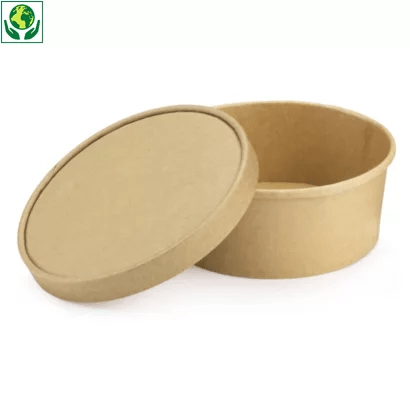 |
The round cardboard salad bowlthe modern, safe and stackable design is practical and enhances the food. |
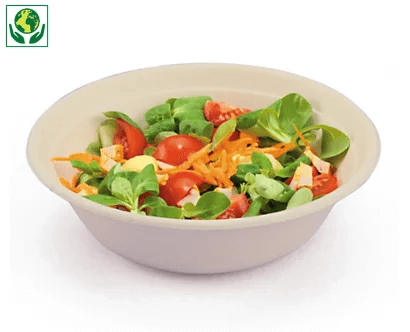 |
Sugar cane salad bowlspackaging: strong and rigid, it is compostable and enhances the food. |
to pack your sandwiches and paninis
 |
Greaseproof paper bagsoven and grill safe: this innovative packaging is oven and grill safe, practical and versatile, it is also waterproof. |
 |
Krafts bagspackaging: Simple and practical, it comes in a variety of designs and qualities to suit all needs. |
for fast-foods
 |
The cardboard burger boxfood safe: it keeps food warm and its inner surface is made of greaseproof paper. |
 |
Biodegradable burger boxwater and grease resistant, rigid and stackable, it has all the right points. |
 |
The rigid cardboard chip bagfood storage : ideal for an attractive vertical presentation of food. |
for your desserts
 |
Sugar cane dessert cupeasy to use: simple and practical, it also has a lid that can be clipped on quickly and easily |
 |
PET plastic dessert cuptransparent and practical, it enhances the appearance of food |
 |
Sugar cane potit is versatile, suitable for hot filling and microwave heating, and is also water and fat resistant. |
for various food products
- They exist in sugar cane, PET plastic, corn starch..
- Some have a window to reveal the food to enhance it.
- There are also tins with a lattice closure: they can be microwaved and are suitable for both hot and cold food.
- Boxes with compartments are functional, stackable and leak-proof; this type of packaging makes it possible to separate preparations and offer an attractive presentation to dishes.
- Cardboard: suitable for all snack foods (salads, wings, nuggets, etc.)
- Sugar cane: compostable, water and fat resistant, and rigid, these trays have a large transparent lid to enhance their contents.

Bags, to make it easier to transport your products
Kraft paper bags are a robust, ecological and practical solution to plastic bags. They can be personalised (logo, image, message…).
Ideal packaging for doggy bags
Doggy bags consist of taking the leftovers of an unfinished meal with you to the restaurant. Widely practised for a long time in countries such as the United States, it is becoming increasingly popular in France. It is now being encouraged to limit food waste. Since 1 July 2021, following the EGAlim law, catering establishments have had to offer their customers a reusable or recyclable container in order to take away any food or drinks not consumed on the premises. Opt for doggy bags that improve the customer experience and enhance your brand image, thanks to..
- Suitable containers: trays, jars, boxes, salad bowls, etc. Depending on the food, choose containers that can be microwaved, that preserve temperature, that can be resealed, that are easy to store in the fridge, etc
- Paper bags: simple or insulated, they make it easier to transport food.
going further: what if you customised your takeaway packaging?
Packaging has not only a practical function, it also plays a strong marketing role, which is why it is particularly interesting to customise it
- It directly reflects your brand identity and values: choice of colours and materials, addition of a message or slogan… Packaging says a lot about a company, its target clientele and its commitments.
- It advertises you: on the street or in transport, take-away packaging catches the eye of many consumers. Even more so when it smells of delicious food. This can arouse their curiosity and make them want to discover your establishment. That’s why it’s essential to choose packaging that is well designed and promotes your business.
- It enhances the customer experience: providing packaging that is convenient to carry and ideally preserves the food is essential. Also consider theunboxing experience (the moment when the consumer unwraps their order). The food should be easy to take out and well presented in the packaging.
consumers are increasingly taking to social media to share their experiences with brands, with countless individuals and influencers taking pictures of their food orders. By taking care of your packaging, you can make customers want to take pictures of it and share it on their social media. This will help you to improve your brand image and build brand awareness. Takeaway food packaging has a number of important roles to play – it protects food, makes transport easier, enhances the customer experience and builds brand image. So choosing the right packaging is no small matter. Want to know more about customised food packaging? Find out the answers to all your questions in the replay of our webinar “Food packaging: new regulations, constraints or opportunities?
Key points to remember about takeaway food packaging
- Take-away is becoming more and more important in the restaurant industry;
- Food packaging must meet strict safety criteria;
- Customised takeaway food packaging improves brand image and customer experience.













